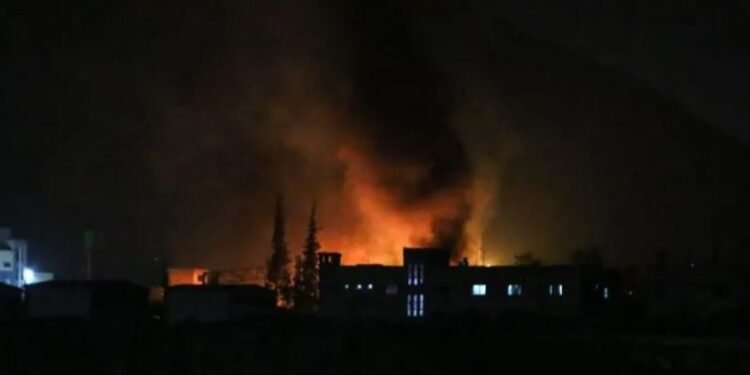Israeli warplanes have reportedly launched numerous airstrikes across Syria, including in the capital, Damascus.
The UK-based Syrian Observatory for Human Rights (SOHR) claims it has documented over 310 strikes by the Israel Defense Forces (IDF) since the fall of the Assad regime on Sunday.
The IDF has confirmed that its troops are operating within Syrian territory beyond the demilitarized buffer zone separating Syria and the Israeli-occupied Golan Heights. According to the IDF, the airstrikes aim to prevent weapons from reaching “extremists” during Syria’s transition to a post-Assad era.
SOHR reported that the strikes targeted key military infrastructure, including weapons warehouses, ammunition depots, airports, naval bases, and research facilities, in areas such as Aleppo, Damascus, and Hama. Over 60 strikes were carried out overnight between Monday and Tuesday, with many facilities reportedly destroyed.
Verified footage from the BBC shows strikes on multiple sites, including a naval port in Latakia. Rami Abdul Rahman, SOHR’s founder, described the attacks as severely crippling the Syrian army’s capabilities and condemned the violation of Syrian sovereignty.
While the IDF acknowledged crossing into Syrian territory, it denied reports of tanks approaching Damascus. IDF spokesperson Nadav Shoshani clarified that troops were stationed in the buffer zone and surrounding areas near the Israeli-occupied Golan Heights.
Geolocated images confirmed the presence of IDF soldiers just over half a kilometer beyond the demilitarized zone near Kwdana village. Israeli Prime Minister Benjamin Netanyahu described the occupation of positions in the buffer zone as “temporary defensive measures” until a suitable arrangement could be reached.
Netanyahu stated, “If peaceful relations with the new forces in Syria are possible, that is our desire. However, we will take necessary actions to defend Israel and its borders.”
Turkey’s foreign ministry condemned Israel’s actions, accusing it of pursuing an “occupying mentality” during a critical moment when Syrians hope for peace and stability.
The buffer zone, established in 1974 under a ceasefire agreement between Israel and Syria, was designed to prevent military confrontations following Israel’s occupation of the Golan Heights. Israel annexed the territory in 1981, a move internationally unrecognized except by the U.S. in 2019.
Israeli Foreign Minister Gideon Saar defended the strikes, emphasizing Israel’s focus on neutralizing strategic weapons systems, such as chemical weapons and long-range missiles, to prevent their acquisition by extremist groups.
The UN’s chemical weapons watchdog has urged Syrian authorities to secure suspected stockpiles of chemical weapons, although their exact locations and quantities remain unknown.
These developments follow the capture of Damascus by rebel forces, led by the Islamist group Hayat Tahrir al-Sham (HTS), and the toppling of Bashar al-Assad’s regime over the weekend. The Assad family had ruled Syria since 1971. Rebel fighters declared Syria “free” after seizing the capital on Sunday.

















